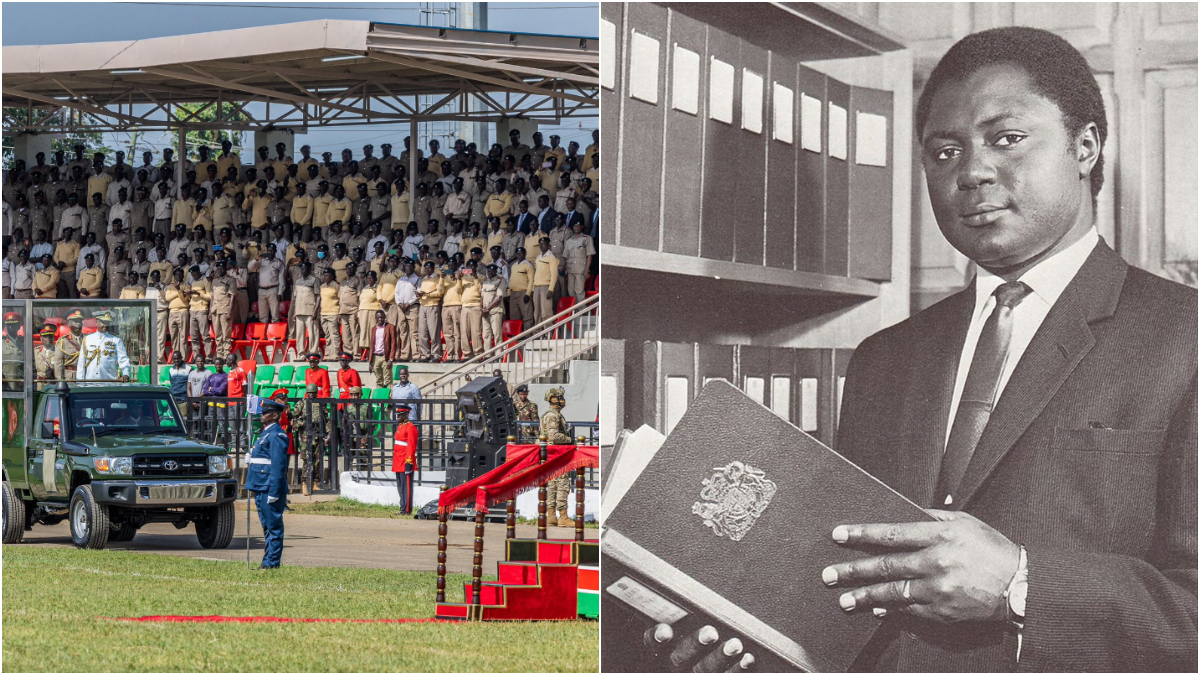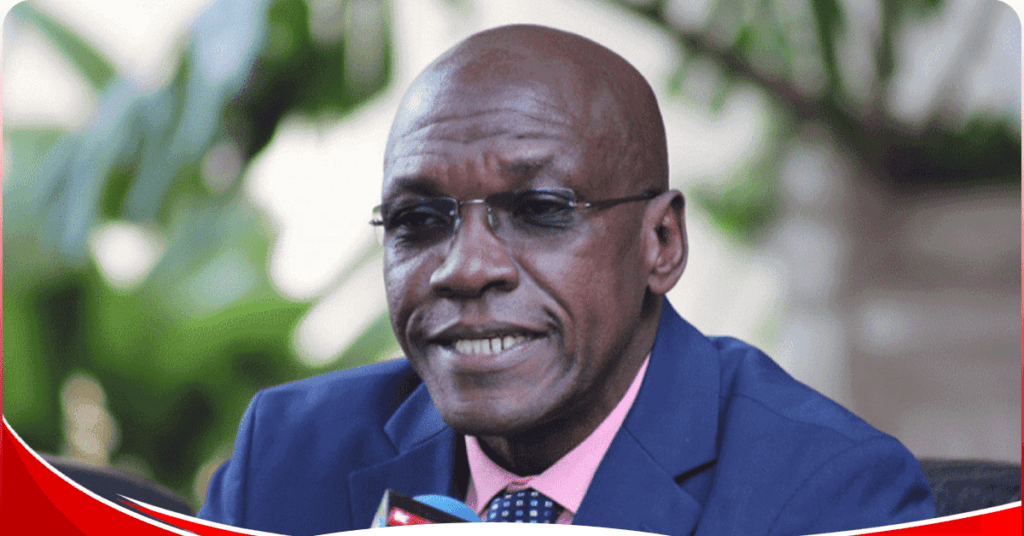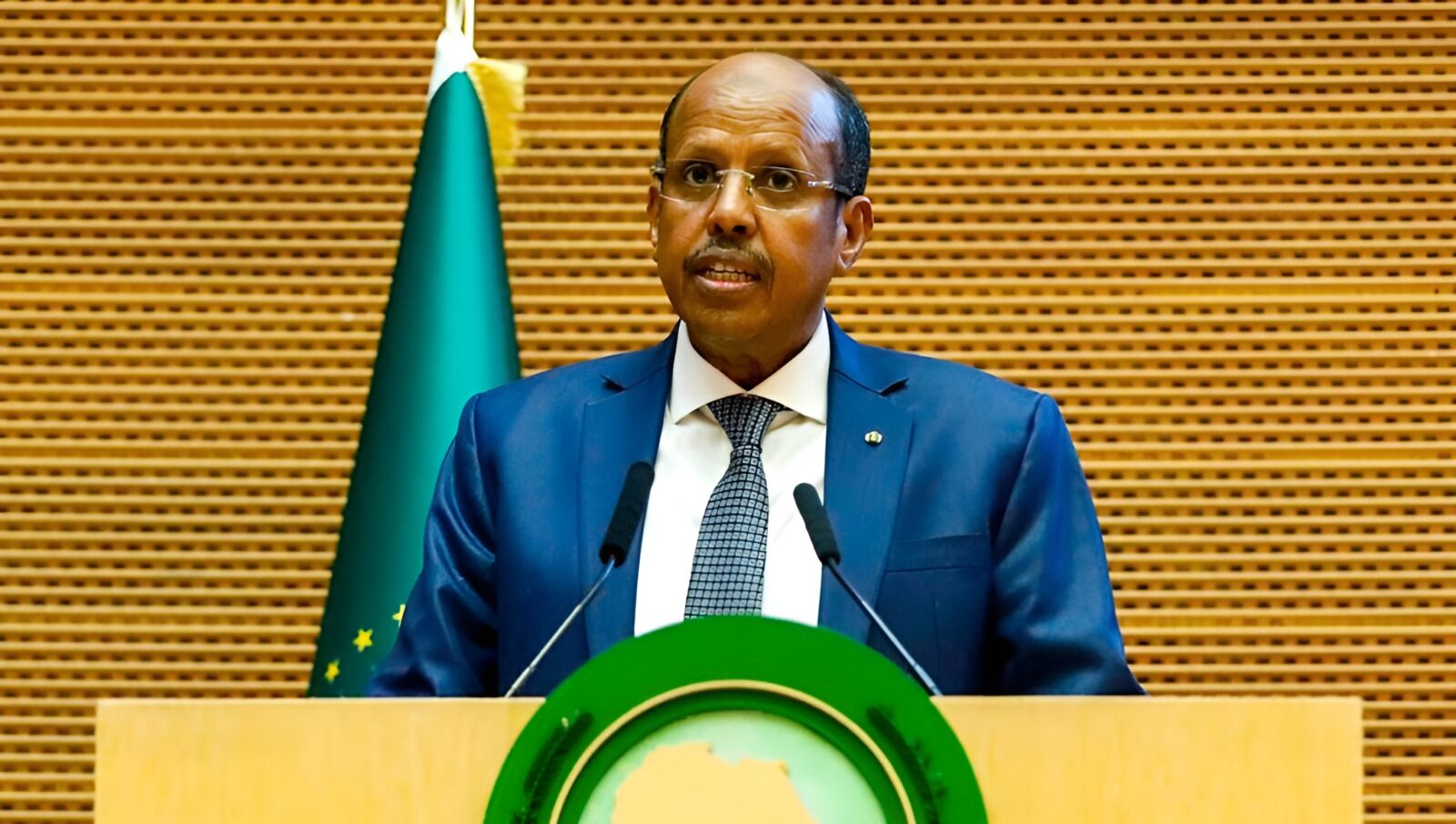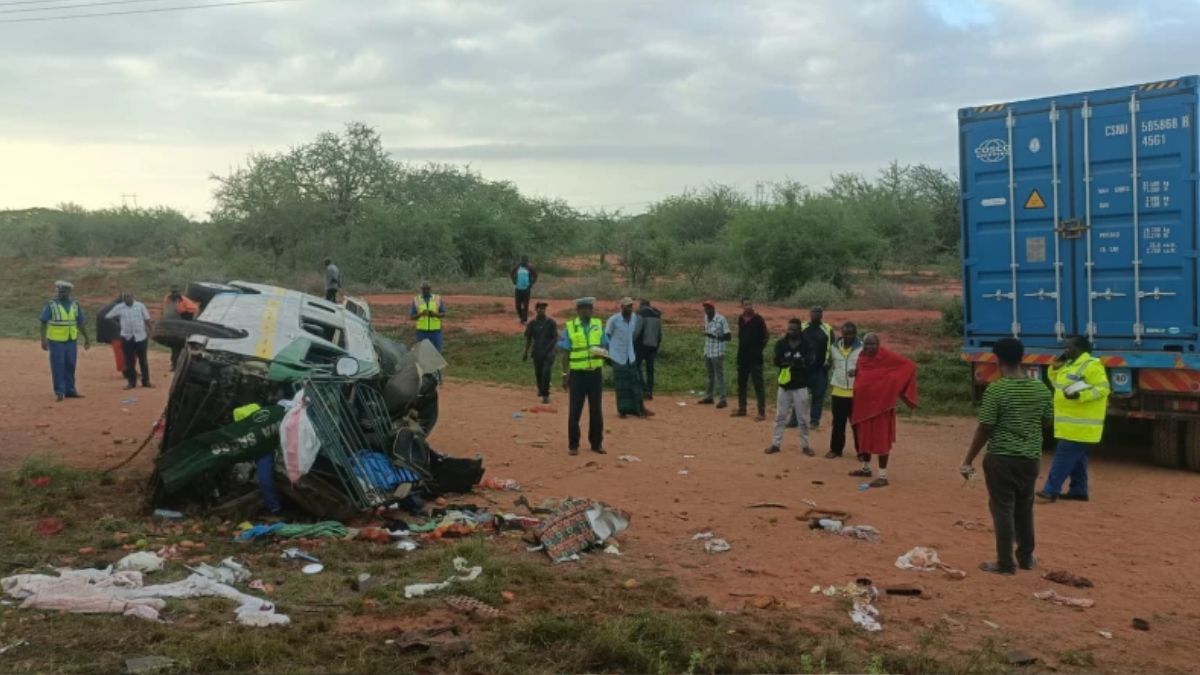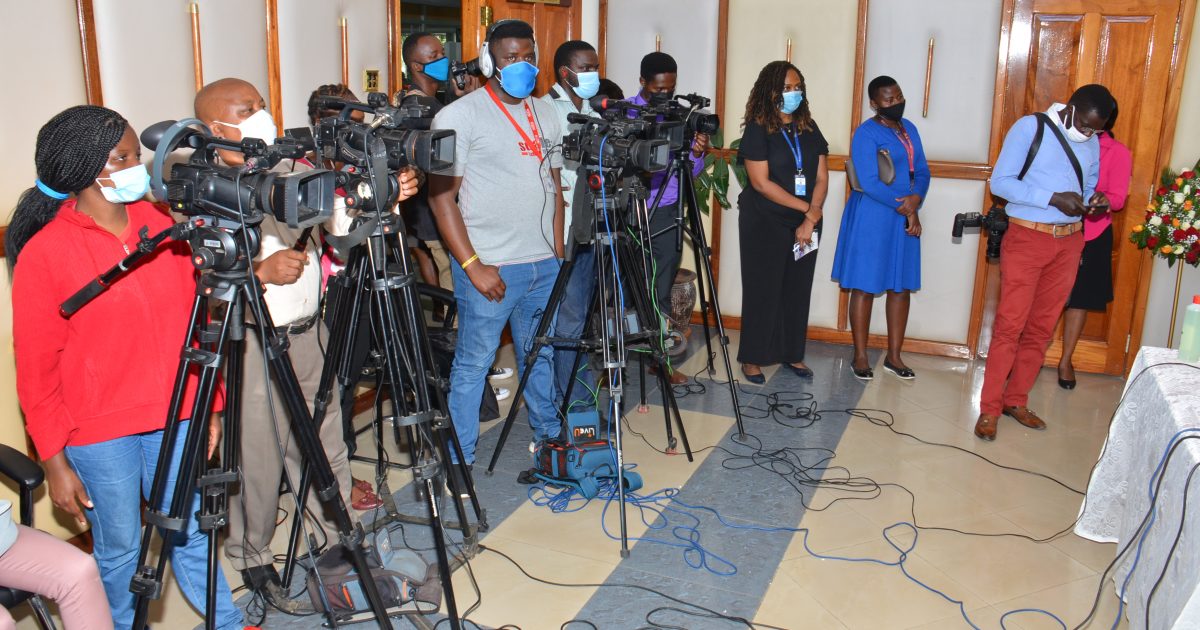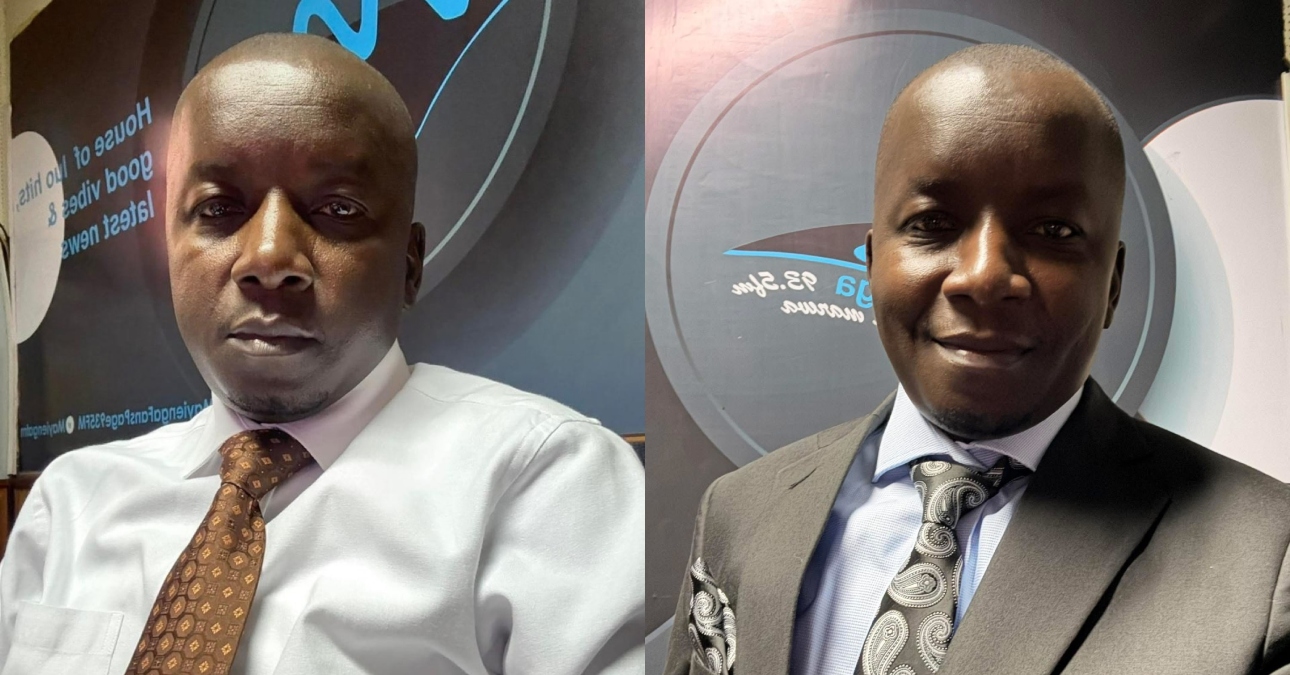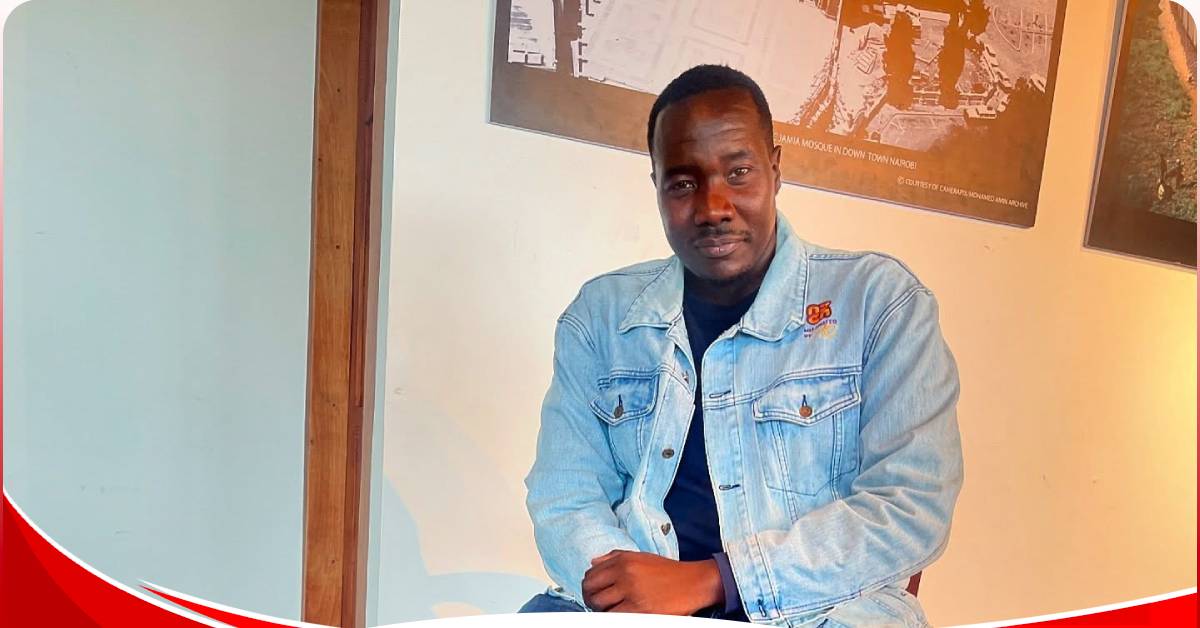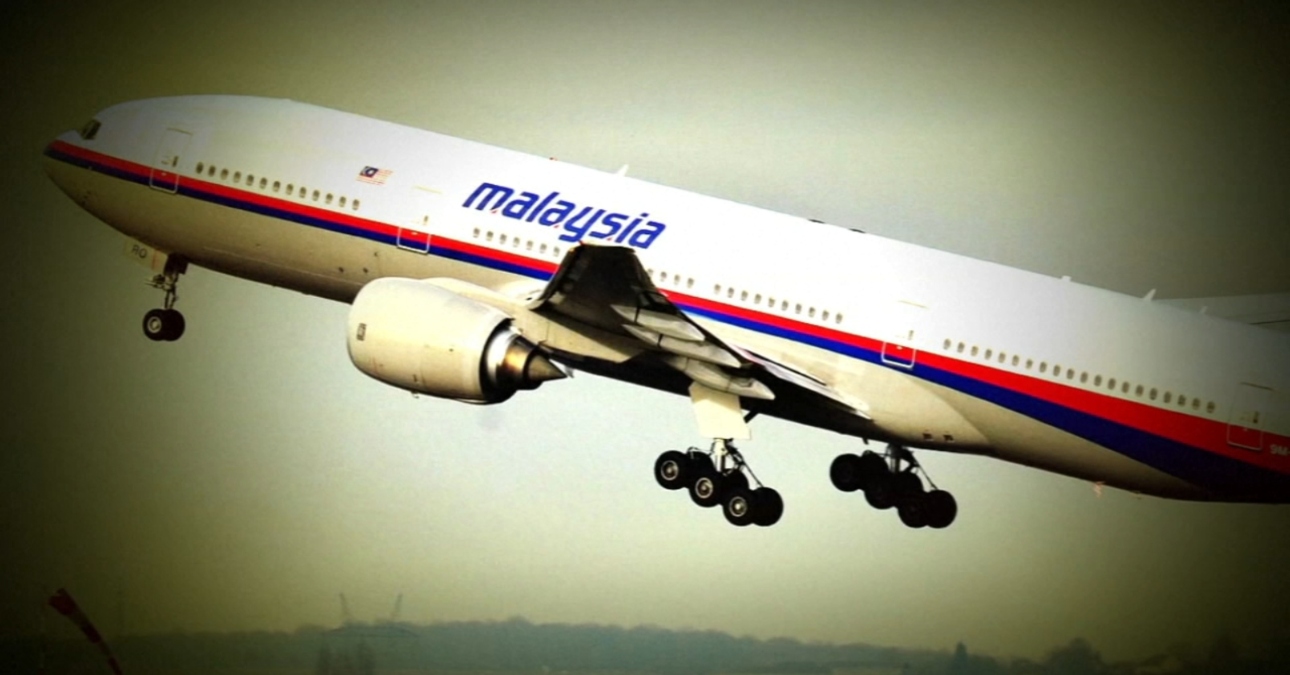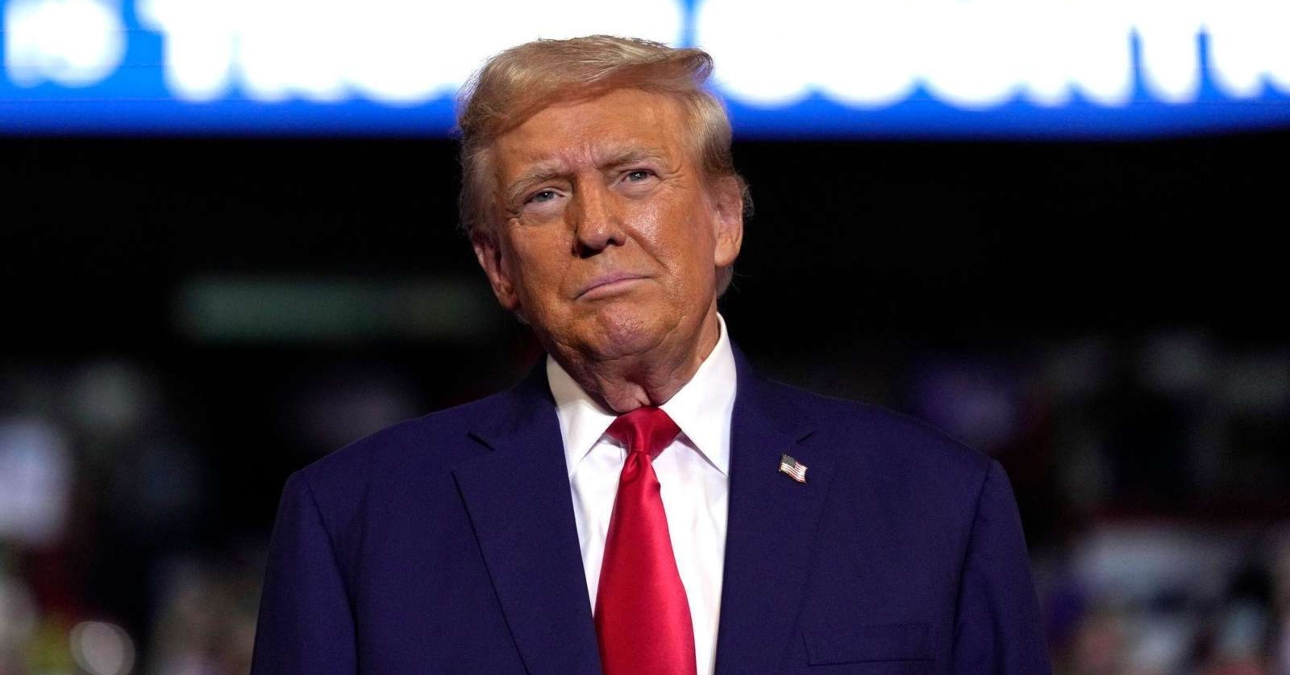Tom Mboya was one of the most prominent politicians in Kenya’s history. He was instrumental in the independence movement and played a key role in shaping Kenya’s post-independence political landscape.
He was a key figure in the formation of Kenya’s political ideology and a leading advocate for education, especially for African students abroad.
Mboya is celebrated as one of Kenya’s founding fathers, and his influence stretched beyond the borders of his native Homa Bay County. His tragic assassination in 1969 made him a martyr for the independence movement.
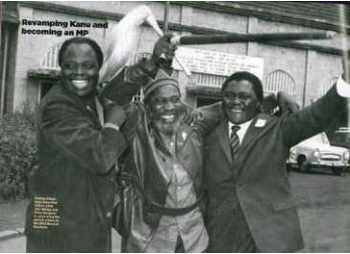
Early life and education
Thomas Joseph Odhiambo Mboya was born on 15th August 1930 in Kilimambogo, near Thika. His father was called Leonardus Ndiege while his mother was called Marcella Awuor from the Luo ethnic group of Kenya.
Both of his parents were low income sisal cutters working for Sir William Northrup McMillan in his sisal farm the today`s Juja Farm Area. His father was later promoted as an overseer at this sisal plantation and worked for 25years.
Mboya was educated at various mission schools. He first joined Kabaa in Machakos, then St. Marys School, Yala. For higher education, he proceeded to Holy Ghost College (later Mang’u High School). After exceling from Mang’u he was admitted at Royal Sanitary Institute’s Medical Training school for sanitary inspectors training at Kabete in Nairobi in1948. He qualified as an inspector in 1950.
To advance his knowledge in economics, he also enrolled in a certificate course in economics at Efficiency Correspondence College of South Africa. In 1955, Mboya received a scholarship from Britain’s Trades Union Congress to attend Ruskin College, University of Oxford where he studied industrial management.
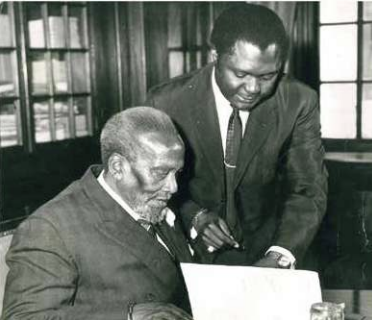
Mboya’s political life
Mboya’s political life can be traced from the year 1950, immediately after he was employed at Nairobi City Council as a sanitary inspector. During this period, Mboya was elected as African Staff Association’s president and immediately embarked on molding the association into a trade union later re-named the Kenya Local Government Workers’ Union (KLGWU).
He resigned from this position after his employer, the Nairobi City Council, became suspicious of his election as the president.
When leaders of the independence party, Kenya African Union (KAU) were arrested in 1952, Mboya was asked to lead and continue with the struggle. The government however banned KAU. Trade unions became the platforms for Mboya to fight for independence and was elected the Secretary General of Kenya Federation of Labor (KFL).
Mboya gave speeches in major cities in Europe and North America condemning the atrocities of British colonial administrators in Kenya. He also organized several strikes for better working conditions for African workers. In effort to suppress his activities the colonial government nearly closed down the labor movement.
In 1956, he was elected member of Legislative Assembly representing Nairobi. He later became secretary general of African Caucus (African Elected Members Organization-AEMO). He used his incredible diplomacy skills to get support for the independence movement from foreign countries.
In 1957, he formed his own party, Nairobi People’s Convention Party (NPC) after he was dissatisfied with the low number of African leaders in the legislative council. In 1958, he was elected as the conference chairman during the All-African People’s (AAP) conference in Ghana convened by Kwame Nkrumah whom Mboya had developed close relationship with.
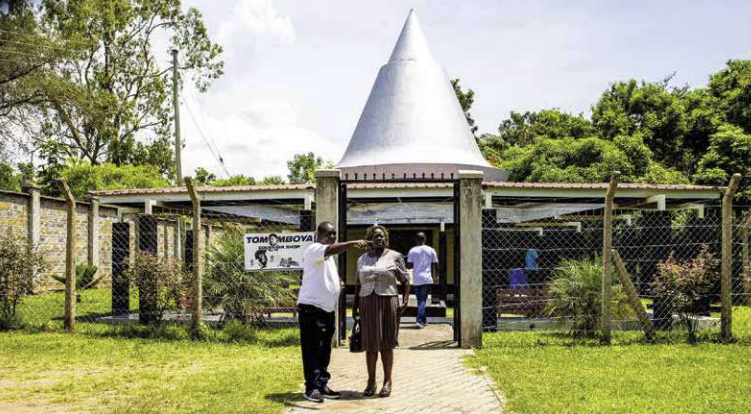
Mboya’s achievements
In 1961, Mboya, Jomo Kenyatta and Oginga Odinga formed Kenya African National Union (KANU) by merging Nairobi People’s Convention Party, Kenya African Union (KAU) and Kenya Independence Movement (KIM).
As the Secretary General of KANU, Mboya headed the Kenyan delegation to Lancaster House Conference where Kenyans constitutional framework and independence were to be negotiated. In 1962, Mboya was elected as a member of parliament for Nairobi Central Constituency (today Kamukunji Constituency) and became the Minister of Justice and Constitutional Affairs. He created the National Social Security Fund, Kenya’s social security scheme. He also established an Industrial Court to hear labour-management cases.
Son of Homa Bay County
Tom Mboya played a central role in shaping the foundation and growth of Homa Bay. He championed education, regional development, and public infrastructure. One of his most lasting contributions was the transformation of Homa Bay High School. His strong emphasis on science and mathematics positioned the school as a leader in academic excellence.
His vision extended to higher education as well. The grounds that now host Tom Mboya University were once home to the Homa Bay Agricultural Training Centre, evidence of his early investment in knowledge and skill development. Nearby stood the Homa Bay GK Prison, marking the town’s emergence as a multifaceted regional center.
In 1962, thanks in part to his advocacy, Homa Bay was designated the headquarters of the newly formed South Nyanza District. This strategic move elevated the town’s status and established it as a key center for governance and political activity.
In the healthcare sector, Mboya supported the establishment of the Homa Bay District Hospital in 1969. What began as a dispensary evolved into a vital health facility serving the wider region. Through these initiatives, Tom Mboya laid the groundwork for Homa Bay’s transformation into a significant location for education, administration, and development in Kenya.
Mboya Airlift
In 1959, Tom Mboya played a major role in the initiating of the African Airlift program along with African-American students foundation. The program facilitated students from East Africa to study in the United States of America.
This program benefited 81 Kenyan students including from South Nyanza by offering educational opportunities to its young, many of whom later contributed to the region’s development. This program was also called the Mboya Airlift.
One of the youths who benefitted from this program was Barack Hussein Obama Senior, the father of the United States’ 44th president. He was among the people who received support while abroad where he studied economics at the University of Hawaii at Manoa.
The program also benefitted other young Africans who came back home and contributed to development. Mboya organized the Africa Airlift (AA) project in 1959 through which youths were flown to study at U.S universities.
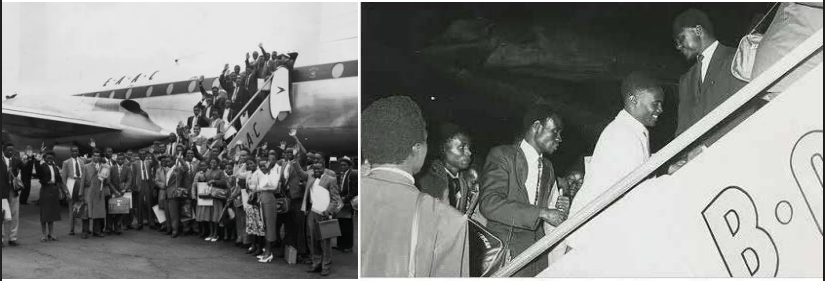
Mboya’s marriage
Tom Mboya wedded Pamela Odede on January 20, 1962 at St. Peters Clavers Catholic Church. His wife was a graduate from Makerere University, and a daughter of politician Walter Odede. They had five children.
Their daughters are: Maureen Odero and Susan Mboya. Their sons are Lucas Mboya, and twin brothers Patrick and Peter.
Tom Mboya is buried in a heritage mausoleum on Rusinga Island, Homa Bay County.


